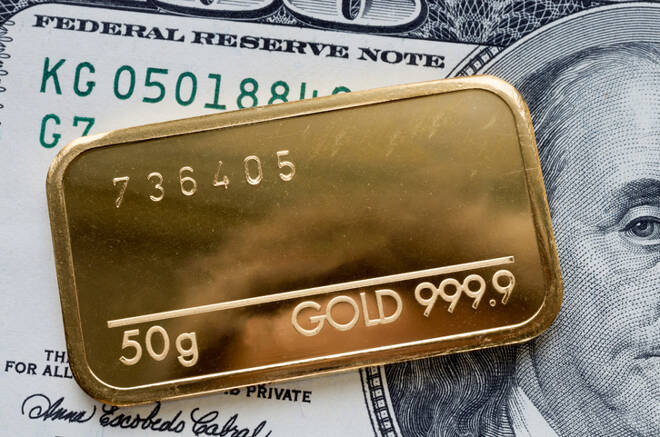Advertisement
Advertisement
In A U.S. Dollar Downturn, Gold Bugs Stays Firm
By:
A weaker dollar helped gold to extend gains into a fourth trading session in London. Soft US industrial production numbers eased inflation worries and eased monetary tightening concerns, which resulted in a drop in the greenback.
A weaker dollar helped gold to extend gains into a fourth trading session in London. Soft US industrial production numbers eased inflation worries and eased monetary tightening concerns, which resulted in a drop in the greenback.
The US Dollar Index fell to a three-week low on the back of the weak data and bond yields fell.
This precious metal has been trading in a range of $1,755 to $1,787 throughout the week, and its spot price were little changed at $1,784 an ounce.
Gold traded higher on Thursday as the dollar, which moves inversely to the dollar, fell on Thursday.
Even though gold’s gains slowed due to investors’ appetite for risk, metal experts remain optimistic that gold will break through $1800 again in the near future.
An ounce of gold declining could find support at 1,775 an ounce before reaching the lower trend line of a channel-up pattern. In addition, the 55-hour simple moving averages and 200-hour simple moving averages are near the trend line near 1,770 an ounce.
According to two Federal Reserve officials, interest rates should not be raised at this point in time, despite asset tapering beginning soon.
Deputy Governor Randal Quarles said he favors beginning asset tapering in November 2021, but he added that rising inflationary pressures, which could require a policy response, should also be considered.
In the post-COVID-19 cycle, the Bank of England is expected to be the first major central bank to hike interest rates.
To curb high inflation at the British economy, markets expect the Bank of England to raise interest rates next month. Inflation is expected to jump above 4% this year, exceeding the Bank of England’s 2% target.
Inflation in September was driven by transportation costs, with gasoline prices skyrocketing even before the fuel crisis slashed supplies.
About the Author
Olumide Adesinaauthor
Olumide Adesina is a France-born Nigerian. He is a Certified Investment Trader, with more than 15 years of working expertise in Investment trading. He is a Member of the Chartered Financial Analyst Society.
Advertisement
